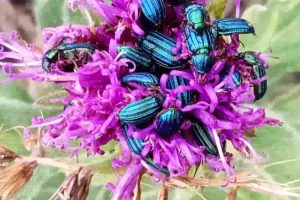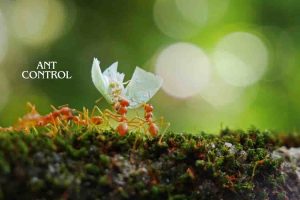The Impact of Climate Change on Pest Control: Adapting Sydney’s Food Processing Sector
As climate change progresses, its effects are felt across various industries, including the food processing sector in Sydney. A notable issue we face is the increasing difficulty of pest control. Warmer temperatures and changing weather patterns, hallmarks of climate change, are not only altering pest populations but are also affecting their behavior and the ecosystems that support them. These changes directly impact our methods and strategies of pest management, requiring adaptation to protect food safety standards and maintain the integrity of our food supply chains.
Our experience within the food processing industry of Sydney teaches us that effective pest control is critical to ensuring product quality and regulatory compliance. The evolving climate has the potential to increase the number, diversity, and distribution of pests, thereby presenting new challenges that we must meet with innovation and resilience. It’s essential for us to understand how exactly these climatic changes influence pest behavior and to apply this knowledge to successfully mitigate their impact on our operations.
Navigating this complex dynamic, we must adopt pest management strategies that are both environmentally sound and effective for the changing conditions. Collaborative efforts among scientists, industry experts, and policymakers are also vital for developing integrated pest management practices that align with the current climate reality. Our proactive approach in this regard must keep pace with the rapid environmental changes to safeguard Sydney’s food processing industry now and in the future.
Overview of Climate Change and Its Global Impact
Climate change is a complex environmental issue that affects us all at a global scale. It is primarily characterized by alterations in temperature and the concentration of greenhouse gases in the atmosphere.
Defining Climate Change
Climate change refers to significant and lasting changes in the statistical distribution of weather patterns over periods ranging from decades to millions of years. It could manifest as a change in average weather conditions, or in the distribution of events around that average (e.g., more or fewer extreme weather events). Changes are attributable to natural phenomena such as volcanic eruptions, solar radiation, and variations in the planet’s orbit around the sun. However, since the industrial revolution, human activities have been leading contributors to climate change, primarily as a result of burning fossil fuels which release greenhouse gases like carbon dioxide (CO2) and methane (CH4) into the atmosphere. These gases trap heat and cause the global temperatures to rise, a phenomenon also known as global warming.
Global Temperature Changes
At a global scale, temperatures have been rising unprecedentedly since the late 19th century. The past decade was the warmest on record, and each successive year has often been one of the warmest ever observed. Global warming, the increase in Earth’s average surface temperature, is a clear indicator of climate change. It is caused largely by human actions, notably the emission of greenhouse gases from combustion of fossil fuels, deforestation, and industrial processes. This warming climate is contributing to a host of changes, including more frequent heatwaves, melting polar ice, rising sea levels, changing precipitation patterns, and shifts in wildlife populations and habitats.
Effects of Climate Change on Pest Dynamics
The escalation of climate change is altering the fundamental aspects of insect pest behavior and distribution, which are essential considerations for Sydney’s food processing industry.
Influence on Insect Pests’ Life Cycles
Temperature is a crucial factor influencing insect pests’ life cycles. As temperatures rise due to climate change, we observe a correlation with an increase in the number of generations that certain pests can produce annually. This acceleration in reproduction rates leads to larger populations and more frequent infestations. Moreover, biodiversity within these ecosystems could be affected, as some pest species might outcompete others, potentially disrupting existing population dynamics.
Studies such as “The impact of climate change on insect pest biology and ecology” emphasize that higher temperatures could lead to changes in developmental rates, survival, and reproduction patterns of pests like moths and beetles, which are common in the food processing industry.
Shifts in Pest Distribution and Abundance
Geographical distribution and the range of habitats suitable for various pest species are shifting due to climate alterations. This means we are witnessing pests in areas of Sydney where they were previously non-existent. New introductions of pests to these regions can catch food processing facilities off-guard, as these businesses may not have established pest management strategies for these novel threats.
Increased temperature variations also affect the population dynamics and distribution of natural predators, which can lead to uncontrolled growth in pest populations since their checks and balances within the ecosystem are disrupted. Subsequently, a change in the availability and diversity of host plants can further influence pest distribution and abundance. The research “Climate warming promotes pesticide resistance through…” points out the potential for pests to adapt to climate-induced stressors, including developing resistances to current pest management tactics.
Climate Change and Food Security in Australia
We recognize that climate changes have profound impacts on Australia’s food security, affecting both the agriculture sector and the supply chain. These influences result in varying outcomes across different regions, posing distinct challenges to our crop production capabilities.
Impact on Crop Production
Australia’s agriculture is facing significant shifts due to changing climatic conditions. Increasing temperatures and more frequent droughts are affecting crop yields. For instance, our Great Plains, which serve as the breadbasket of the country, are experiencing more intense and prolonged heatwaves, resulting in reduced grain quality and quantity. In contrast, excessive rainfall events threaten to damage crops and soil quality, leading to delayed planting times and increased pest pressures.
- Our primary crops, such as wheat and barley, are particularly susceptible to these climate extremes, which can directly impact food availability and food prices.
- Supply chain disruptions can arise from these production challenges, echoing concerns for future food availability.
Regional Differences and Specific Challenges
In addressing regional differences, it is clear that Australia’s tropical regions are at increased risk of crop diseases proliferated by warmer and wetter conditions. Our temperate regions, on the other hand, grapple with heightened fire risks and water scarcity, posing threats to livestock and crop viability.
- Northern Australia: We observe a surge in pest populations, which necessitates a more rigorous approach to pest control to safeguard crop health.
- Southern Australia: The focus here is primarily on combating water scarcity and optimizing irrigation to sustain crop production amid variable rainfall patterns.
By studying these regional specifics, we gain a clearer understanding of the tailored strategies required to bolster our food security in the face of climate change.
Adaptive Pest Management Strategies
Adapting to climate change presents unique challenges for pest management in Sydney’s food processing industry. Our strategies must evolve to maintain efficacy against pests amidst changing biotic and abiotic factors.
Advances in Integrated Pest Management (IPM)
Integrated Pest Management (IPM) is a dynamic approach that we continue to refine in response to climate change. Our IPM strategies incorporate several layers:
- Pest Monitoring: Regular surveillance using advanced technologies informs us about pest populations and activity.
- Biological Control: Utilizing natural predators and biopesticides reduces reliance on traditional pesticides.
- Cultural Practices: Altering planting schedules and crop rotations helps to disrupt pest lifecycles.
- Chemical Control: When necessary, targeted use of pesticides with a preference for environmentally friendly options minimizes adverse impacts.
Each component of IPM serves as a gear in the larger mechanism of managing pests. By enhancing our understanding of ecological relationships, we optimize IPM to deliver sustainable pest control while mitigating risks to the environment.
Innovations in Pest Control Methods
Our improvements in pest control methods are driven by necessity and innovation. Our focus includes:
- Biopesticides: We increasingly rely on biopesticides, leveraging their specificity to target pests without harming non-target species.
- Climate-Adapted Pesticides: Development of pesticides that remain effective despite fluctuations in temperature and humidity is ongoing.
- Pest-Resistant Varieties: Collaborating with agricultural scientists, we champion crop varieties bred for inherent pest resistance.
These innovations are crucial for adaptation and mitigation strategies. By integrating new technologies and practices, our pest management remains robust in the face of climate change, ensuring the integrity and safety of our food production processes.
On-Time Service

5 STAR SERVICE BASED ON 100+ GOOGLE REVIEWS
PET & FAMILY FRIENDLY TREATMENT

ALL YEAR-ROUND PROTECTION
Take Back Control Now
8
REASON TO CHOOSE SAFE PEST CONTROL
- Guarantee protection all year-round
- 30 Years Collective Experience
- An impeccable reputation across Sydney's Suburbs
- Certified treatments & written Warranty On all work carried out
- Family Owned & Operated
- Rated #1 Pest Control In Sydney NSW
- No Mess, No Smell
- Family & Pet Friendly Treatments
REQUEST A QUOTE






